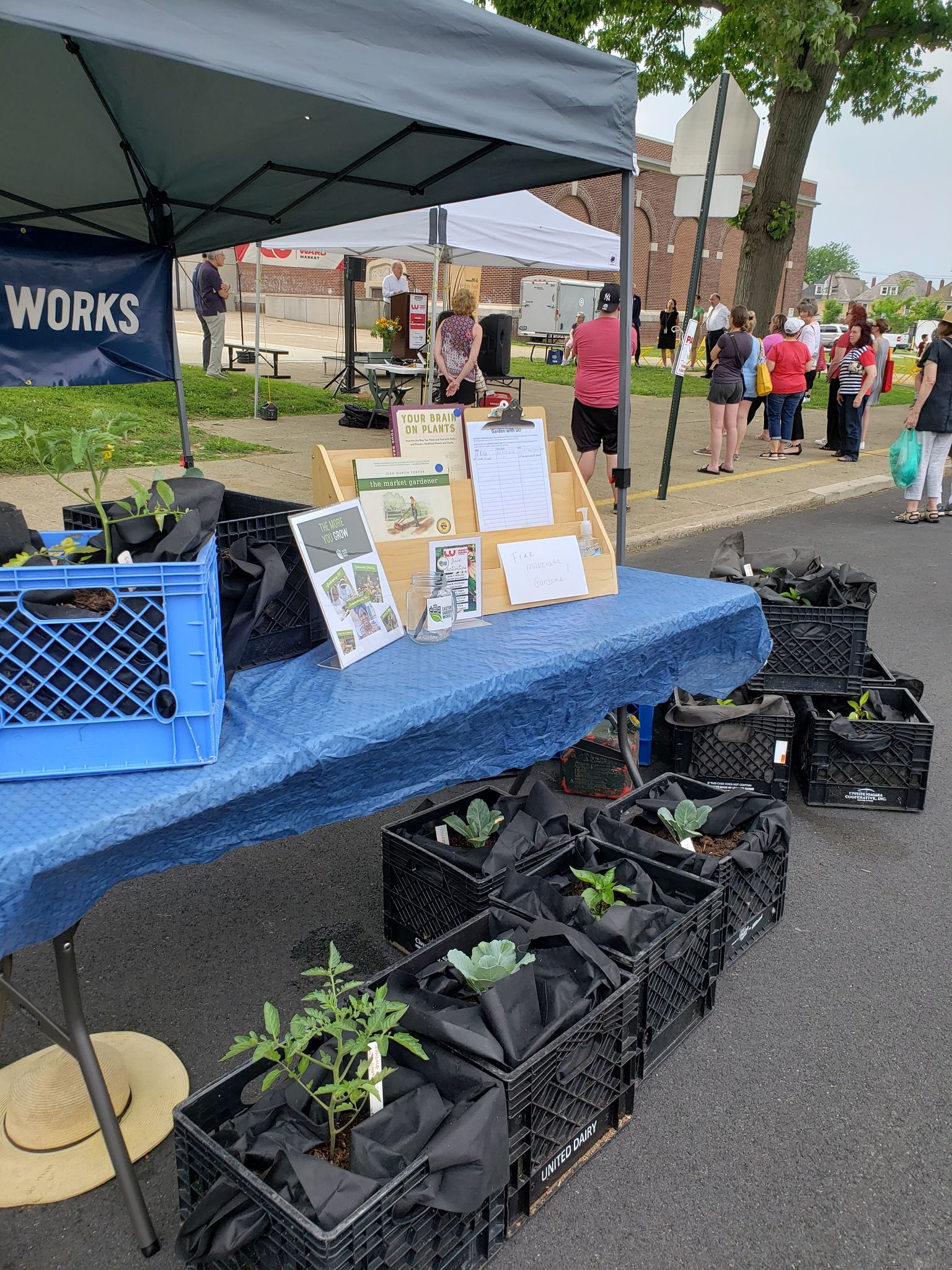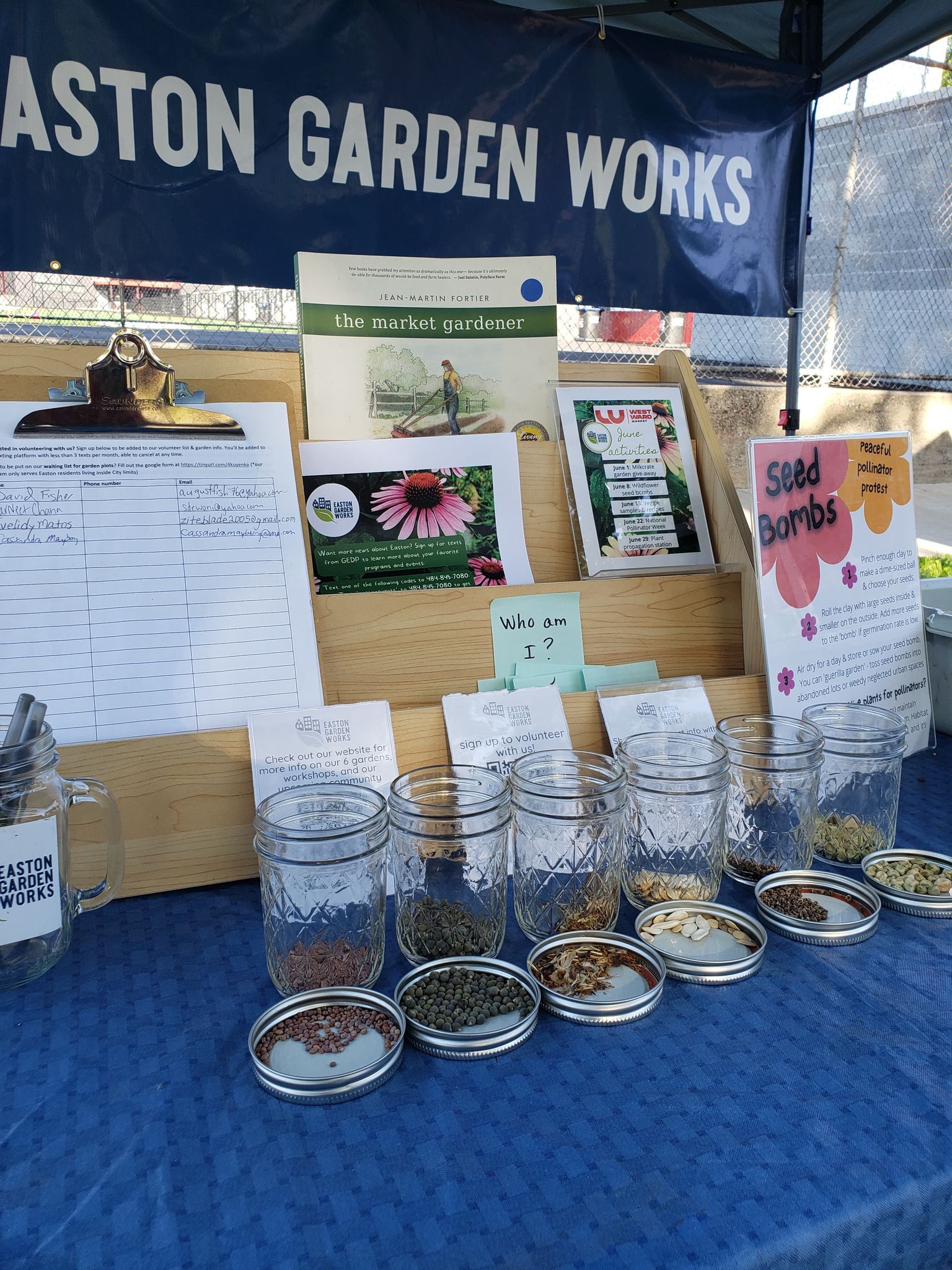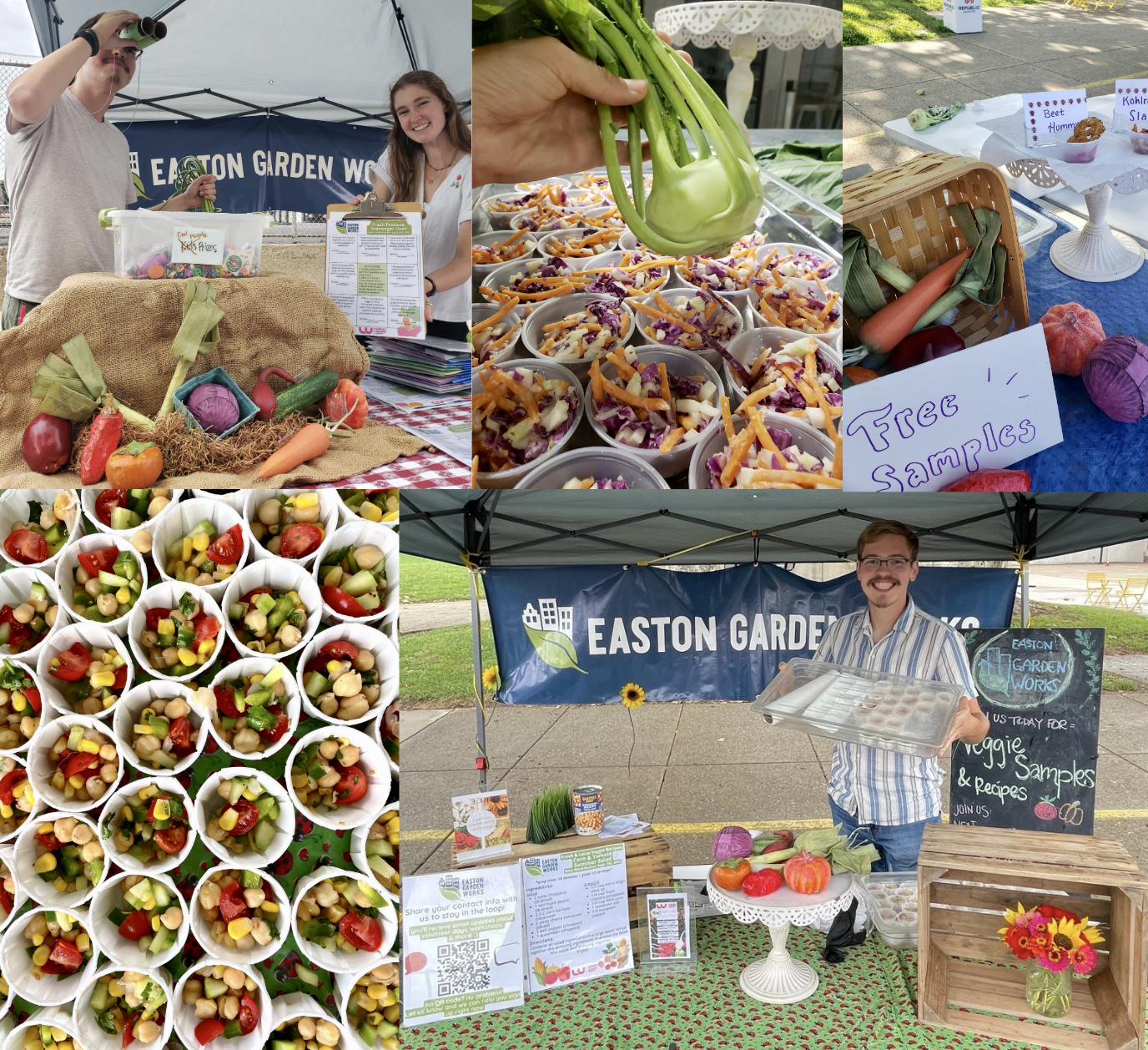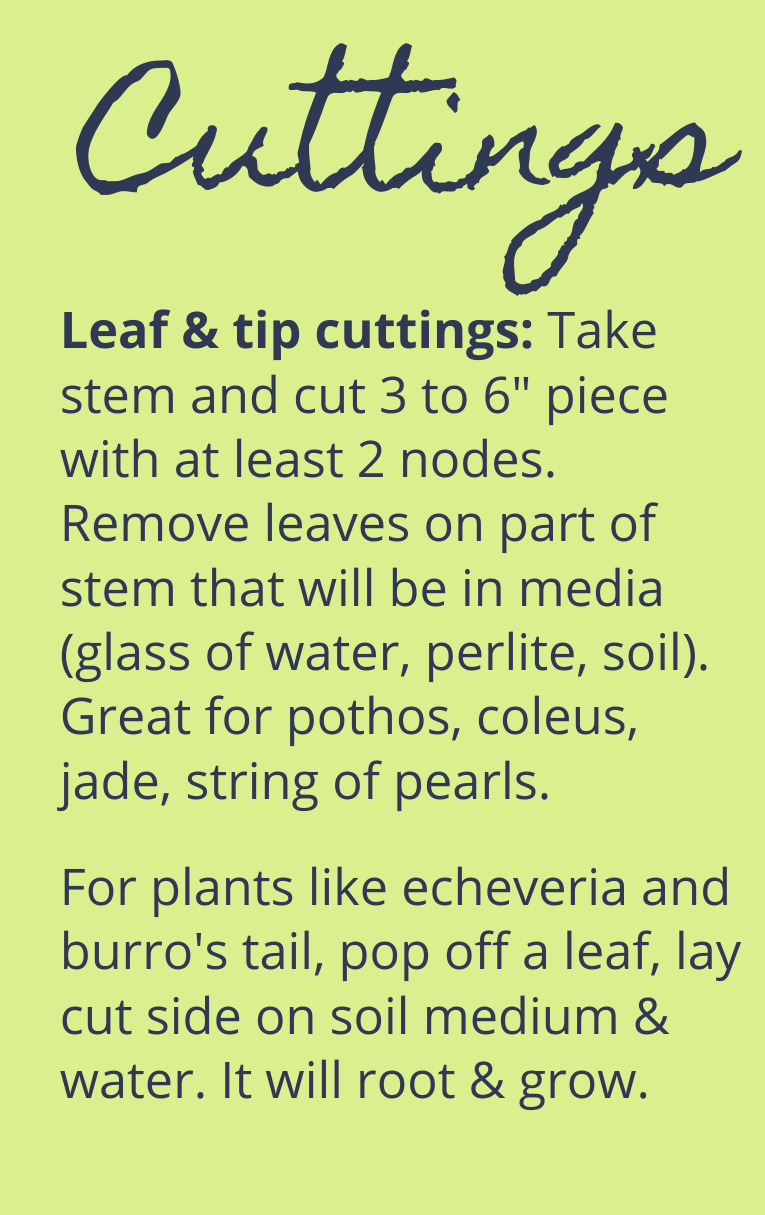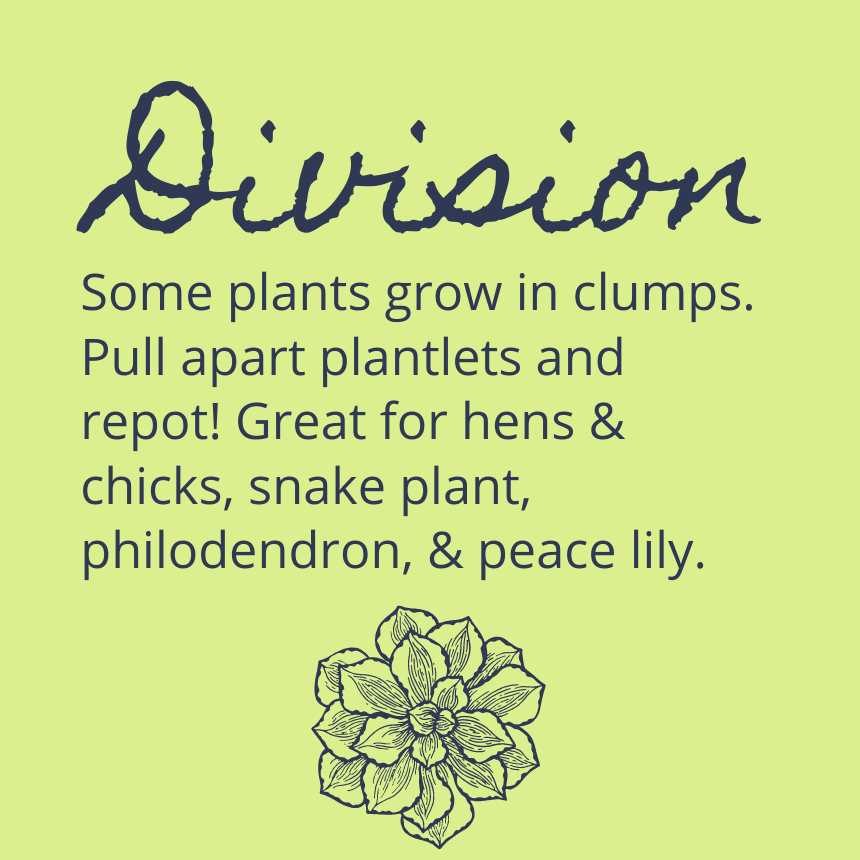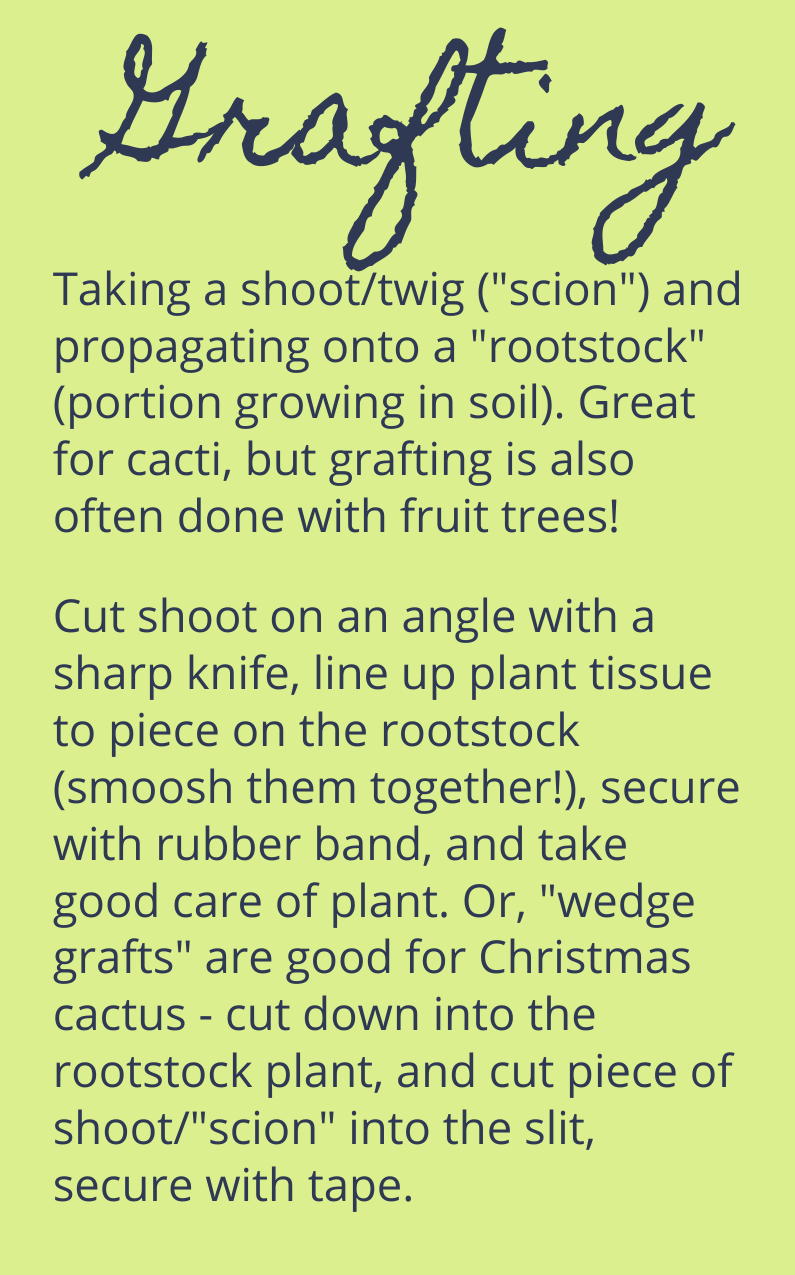West Ward Market Recap: June
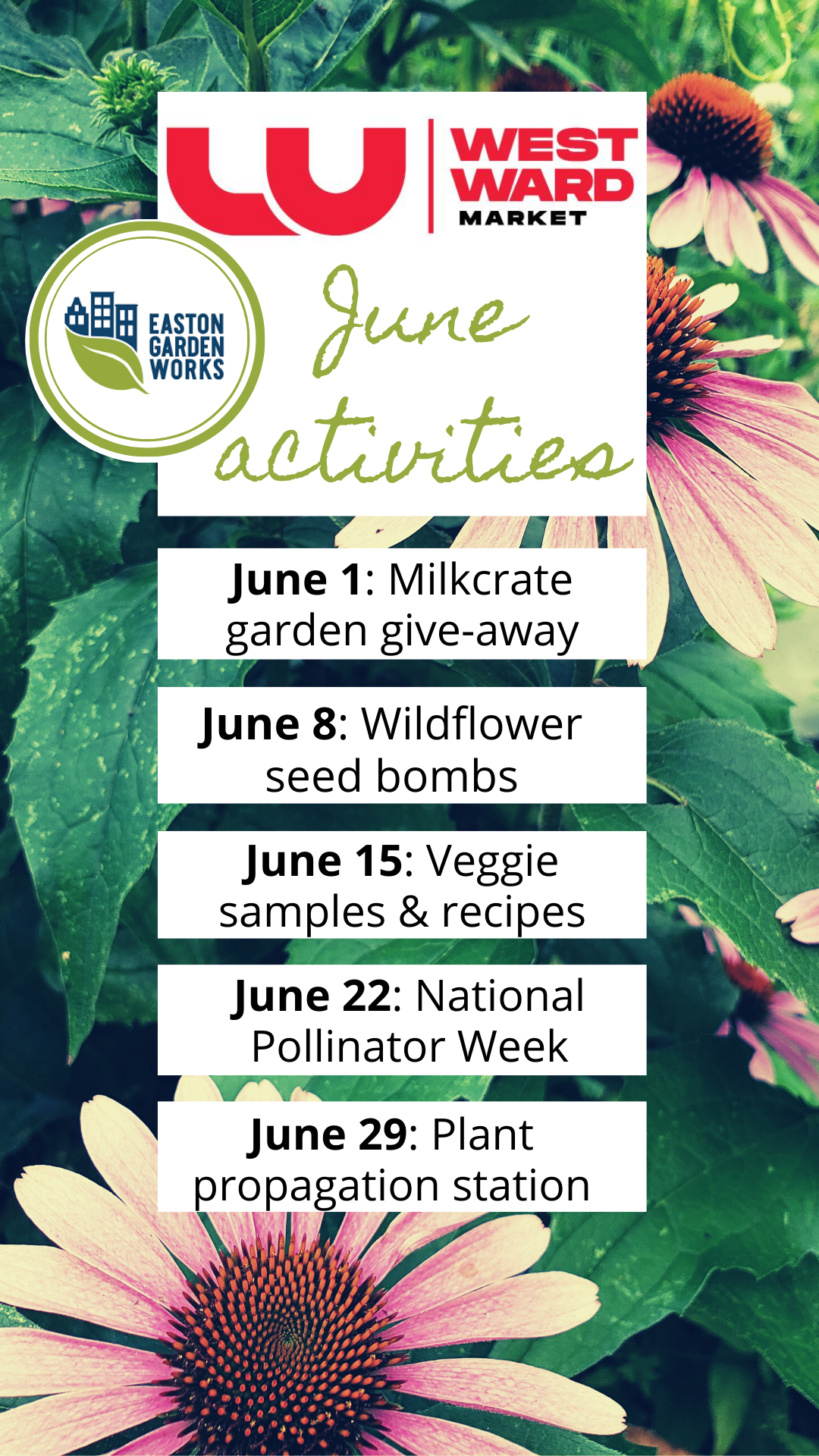 Week 1: Milkcrate garden give-away
Week 1: Milkcrate garden give-away
Our annual free milkcrate garden give-away was hosted this year at the West Ward Market. The design is simple, and we hope it inspires residents to duplicate them. Hard plastic milkcrates (donated second-hand by local businesses) are lined with burlap or landscaping fabric, filled with mushroom compost, and finished with a plant we grew from seed. This year, we distributed two types of tomato plants, two types of peppers, tomatillos, and herbs like parsley and cilantro.
Free container gardens like these can sit on a porch for those who don’t have a yard suitable for a garden. They can be reused as a garden or easily recycled. A few tips we shared in caring for a container garden include: choosing the right size container (radishes or lettuces don’t need a deep container, but tomatoes would for example), remember to water frequently (containers dry out a lot faster than soil directly in the ground), fertilize regularly and/or use compost, and consider the material of your container (plastic will hold moisture better than something like terracotta; make sure to add drainage holes if you’re repurposing materials as a container garden).
Week 2: Wildflower seed bombs
Native plants provide food and shelter to wildlife specific to our area. Plants adapted to our climate and soil will thrive naturally, without added fertilizers and accommodations that can be costly and environmentally harmful. We got our hands dirty by rolling milkweed, beebalm, and other native plant seeds into “seed bombs” – a clay & compost sticky wet mixture with a few seeds in each ball. Roll them up like cookie dough, let them dry, and toss them into your garden or around the area. We talked a little about “guerilla gardening”, a way to seed bomb abandoned areas with native plants to ‘green’ the city, highway, and other spots.
Seed bombs are a great tactile activity for kids and adults: plus they head home with a goodie bag of them, and a mission to grow native flowers across our area.
What else did we do that week? A seed matching game! Mystery cups of different seeds (radishes, beets, squash, etc.) were put out with labels that contestants had to match to the right seed. It’s harder than you think. You might know what broccoli looks like in the store, but if you’ve never planted it, you don’t know the seed or how to grow it. They left home with seed packets to grow that season and directions on how to plant them.
Week 3: Veggie samples & recipes
It’s important to try new foods, especially since you’re at a local market. We made a kohlrabi-heavy slaw (with carrots and a garlicy dressing) and beet hummus (with a pretzel to dip) to sample. Our white-board up front asked people to write their favorite and least favorite veggies. Based on the votes, Brussel sprouts, zucchini, and spinach were the top favorite veggies. Unfortunately, kohlrabi, eggplant and okra were not as popular and instead received the most votes as people’s least favorite veggies.
With veggies that are out of the ordinary or have a bad reputation, all you need is a good recipe. Kohlrabi is in the same family as broccoli and brussels sprouts, and full of folate, calcium, magnesium, and carotenoids: helpful for strong bones, protecting from free radical damage, and preventing birth defects. Beets are rich in folate (reduces risk of heart disease), nitrates (lower blood pressure), fiber, and more.
Week 4: National Pollinator Week
Our lovely intern, Maddie, and volunteers used the market booth to celebrate National Pollinator Week. There were more wildflower seed bombs and info on helping out our pollinators: Check out our other blog post dedicated specifically to the importance of pollinators to learn more!
Week 5: Plant propagation station
As a hands-on work station, the plant swap and propagation activity table was set up for people to take cuttings and bring home new houseplants. We had snake plants, string of pearls, aloe, burro’s tail, pothos, Chinese money plant and more on a buffet-style table with all the supplies to plant and take them home.
Another important lesson was that not only houseplants can be propagated – but tomato plant cuttings and canna lily bulb division follow the same methods. You better believe we brought tomato plants to try out too. Below are some brief instructions on cutting, dividing, layering, or grafting – four styles of propagation.


